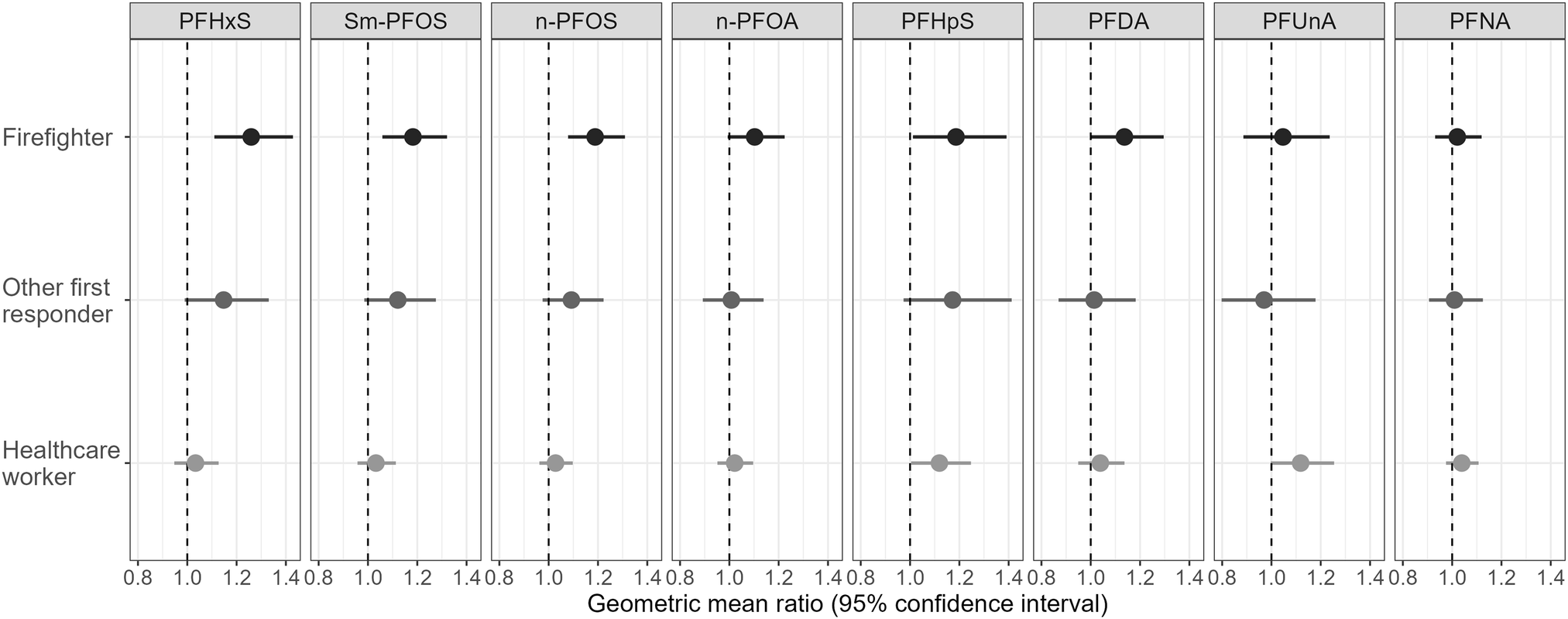2025-05-13 アリゾナ大学
<関連情報>
- https://news.arizona.edu/news/health-care-workers-and-firefighters-have-increased-pfas-levels-study-finds
- https://healthsciences.arizona.edu/news/releases/health-care-workers-firefighters-have-increased-pfas-levels-study-finds
- https://www.nature.com/articles/s41370-025-00753-7
アリゾナ州における消防士、その他の救急隊員、医療従事者、その他の必要不可欠な労働者の職業別血清中パーおよびポリフルオロアルキル物質濃度の違い(2020~2023年) Differences in serum concentrations of per-and polyfluoroalkyl substances by occupation among firefighters, other first responders, healthcare workers, and other essential workers in Arizona, 2020–2023
Cedar L. Mitchell,James Hollister,Julia M. Fisher,Shawn C. Beitel,Ferris Ramadan,Shawn O’Leary,Zhihua Tina Fan,Karen Lutrick,Jefferey L. Burgess & Katherine D. Ellingson
Journal of Exposure Science & Environmental Epidemiology Published:06 March 2025
DOI:https://doi.org/10.1038/s41370-025-00753-7

Abstract
Background
Certain occupations have greater risk for per- and polyfluoroalkyl substances (PFAS) exposure because of PFAS use in occupation-associated materials.
Objective
We sought to assess whether PFAS concentrations differed by occupation among certain Arizona workers and whether concentrations differed over time by occupation.
Methods
Serum concentrations for 14 PFAS were measured among 1960 Arizona Healthcare, Emergency Responder, and Other Essential Worker Study participants. Samples were collected at enrollment and periodically during July 2020–April 2023. Occupational categories included firefighters, other first responders, healthcare workers, and other essential workers. We fit multilevel regression models for each PFAS to estimate differences in geometric mean concentrations or odds of PFAS detection at enrollment by occupational category. For participants with ≥1 serum sample, we evaluated for yearly longitudinal differences in PFAS concentrations by occupational category. We used other essential workers for comparison, and adjusted for age, sex, race and ethnicity, year, and residential county.
Results
Adjusting for covariates, firefighters had higher perfluorohexanesulfonic acid (PFHxS), branched and linear perfluorooctanesulfonic acid (PFOS), and perfluoroheptanesulfonic acid (PFHpS) concentrations than other essential workers (geometric mean ratios 95% CIs: 1.26 [1.11–1.43]; 1.18 [1.06–1.32]; 1.19 [1.08–1.31]; and 1.19 [1.01–1.39], respectively). Healthcare workers had higher odds of detection of branched perfluorooctanoic acid (Sb-PFOA) and perfluorododecanoic acid (PFDoA) than other essential workers, adjusting for covariates (odds ratios 95% CIs: 1.35 [1.01–1.80]; 2.50 [1.17–5.34], respectively). During the 3-year study, we detected declines in PFAS concentrations among other essential workers; few longitudinal differences in concentrations by occupation were detected.
Impact Statement
Using data from a large prospective cohort of frontline workers in Arizona, we compared serum concentrations of 14 per-and polyfluoroalkyl substances (PFAS) among firefighters, other first responders, healthcare workers, and other frontline essential workers. We found that firefighters have higher concentrations of certain PFAS chemicals and the odds of detecting other PFAS chemicals are higher among healthcare workers compared with people in other occupations. Our findings highlight the importance of further action to reduce PFAS exposure within highly exposed occupational groups, such as firefighters, and the need to expand evaluation of exposure among other occupations, including healthcare workers.


